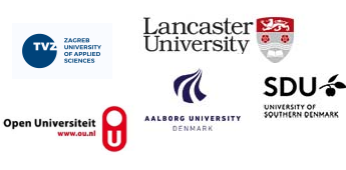

Visualising the code: a study of student engagement with programming in a distance learning context
Elaine Thomas, Soraya Kouadri Mostéfaoui, Helen Jefferis
The Open University, Milton Keynes, United Kingdom.
Keywords
visual programming, student engagement , distance learning , networked learning, computer science education, Scratch
Abstract
Programming is a subject that many students find difficult and it may be particularly challenging for distance learning students working largely on their own. Many ideas have been put forward in the literature to explain why students struggle with programming, including: the relative unfamiliarity of computer programming or ‘radical novelty’ (Dijkstra, 1989), cognitive load (Shaffer, 2004) and that the whole learning environment may be influential (Scott & Ghinea, 2013).
This paper reports on the first phase of a project, ‘Visualising the code’, which is investigating the impact of using a visual programming language on student engagement with programming. We used as our case-study, TU100 ‘My digital life’ which is a level 1 undergraduate Computer Science module in the Open University (UK). The rationale for this work stems from the necessity of developing an introductory undergraduate module that will engage students of widely differing prior levels of experience in terms of programming and of education generally. In TU100, the module team introduced a visual programming environment, based on Scratch (MIT, 2007), called ‘Sense’ which is used in conjunction with an electronic device, the SenseBoard.
We analysed the grades of 6,159 students in the final assessment across six presentations of the module to identify student performance in the programming task, as distinct from their overall performance on the module. The aim was to explore whether there was any difference between student engagement with the programming task in comparison with non-programming tasks. Early results suggest that there is no significant difference in levels of engagement between these tasks, and it appears that success, or otherwise, in one type of task is a good predictor of engagement with the other task.
There are implications for networked learning of this work, given that the learning environment encompasses: the student’s own home or other space, both printed books and digital learning materials, a programming environment linked to a physical device (i.e. the SenseBoard) and communications networks that link students to their peers and to their tutors. The learning environment also includes support through face-to-face and online tutorials and other online resources, such as forums.
In the next phase of the project we will analyse the textual comments made by TU100 students in the end of module survey to evaluate their views on the visual programming environment.
Joint Organising Institutions
Open University of The Netherlands
| Past Conference Proceedings | Contact |